Alien Species
Cottony cushion scale (Icerya purchasi) became a major pest in California citrus groves after it was accidentally imported from Australia on ornamental acacia plants around 1868.
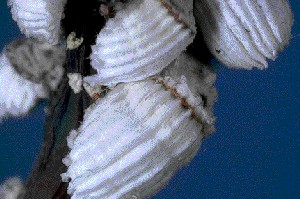
Alfalfa weevils (Hypera postica) were probably introduced from southern Europe on two occasions, once into Utah around 1900, and again into Maryland around 1950.
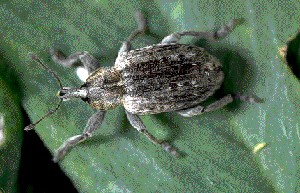
Gypsy moths (Lymantria dispar) were intentionally brought to the United States from Europe around 1869 for experiments on silk production.
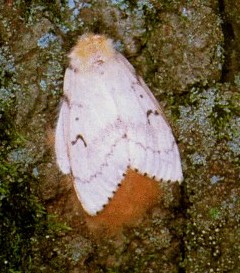
Mediterranean fruit fly (Ceratitis capitata) has been discovered and eradicated from Florida four times (1929, 1956, 1962, and 1963) and from California three times (1975, 1980, and 1989). Total cost of eradication has exceeded 350 million dollars.
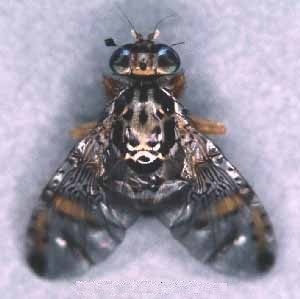
Boll weevils (Anthonomis grandis) are an important cotton pest that entered southeastern Texas from Mexico around 1890. This insect is currently the target of a controversial eradication program by the federal government.
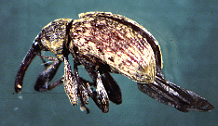
The Hessian fly (Mayetiola destructor), a major pest of wheat, was brought to America around 1775 in the straw bedding materials of Hessian soldiers who came to fight in the Revolutionary War.
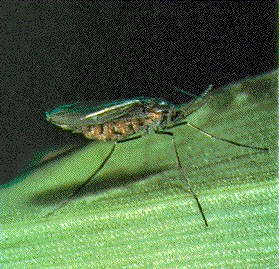
Japanese beetles (Popillia japonica) first arrived in New Jersey around 1916. They were apparently imported from Japan in the roots of nursery stock.

Black imported fire ants (Solenopsis richteri) and red imported fire ants (S. invicta) are South American species that arrived in the United States through the seaport at Mobile, Alabama. The former was first discovered in 1918, the later around 1940.
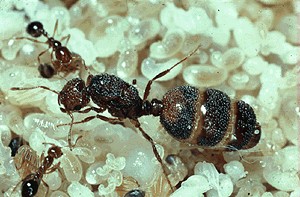
Cereal leaf beetles (Oulema melanopus) are natives of Europe that were found in southern Michigan and northern Indiana in 1962. The species may have first arrived in the United States as early as the 1940’s. They are the first insect pests known to have invaded North America along the St. Lawrence seaway.
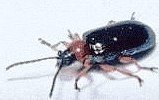
The European corn borer (Ostrinia nubilalis) is a native of Europe and Asia. Although it was first found near Boston, Massachusetts in 1917, it probably arrived in North America several years earlier in shipments of broomcorn from Italy or Hungary.
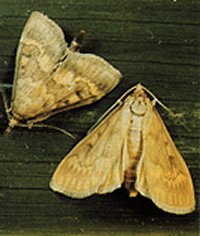
The Russian wheat aphid (Diuraphis noxia) was first detected in central Mexico in 1981. The first U.S. collection was in the Texas Panhandle in March 1986. That summer, damaging infestations were observed in wheat and barley fields in New Mexico, Kansas, Oklahoma and Colorado. The Russian wheat aphid occurs throughout the Great Plains, north to Alberta and Saskatchewan. Russian wheat aphids damage small grains by injecting toxic saliva into the leaves and by sucking sap from the leaves. Yield losses of 50 per cent or more have been attributed to Russian wheat aphids.
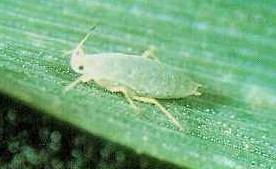
The Asian tiger mosquito (Aedes albopictus) is native to the continent of Asia and is fairly common throughout the oriental region. Shortly after World War II, the mosquito expanded its range eastward to Hawaii and the islands of the South Pacific. In 1985, a substantial breeding population was discovered near Houston, Texas and the mosquito has since spread rapidly through most of the southeastern United States.

Citrus blackfly (Aleurocanthus woglumi Ashby), a serious citrus pest of Asian origin, was discovered in the western hemisphere in 1913 in Jamaica. It spread to Cuba in 1916, Mexico in 1935 and was detected in Key West, Florida in 1934.
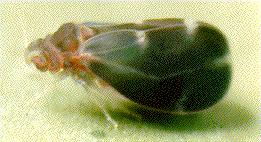
The Asian longhorned beetle (Anoplophora glabripennis) is native to China, Japan, Korea and the Isle of Hainan. It is believed to have been introduced from China in untreated solid wood packing materials (crates, pallets, dunnage). The first infestations of the Asian longhorned beetle in U.S. trees were detected in Brooklyn and Amityville, New York, in 1996. In July of 1998, additional infestations were detected in three Chicago neighborhoods. This beetle is a serious pest of hardwood trees in its native environment, where it has few natural enemies. Here, it has none. If this insect becomes established in the environment, it could turn into the gypsy moth of the 21st century, destroying millions of acres of America’s treasured hardwoods.
